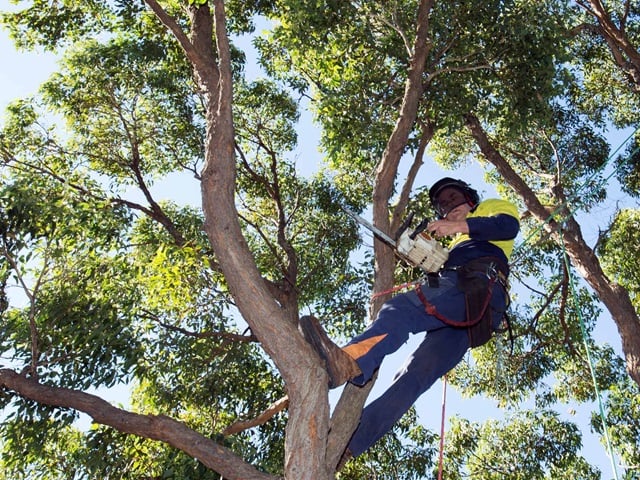Remove and dispose of asbestos safely
The material is only dangerous if broken or disturbed in any way. Here’s what you need to know prior to undertaking any works.
When you need to do this
If your property or development contains asbestos-based materials, or if you are unsure of the material.
What you need to do
Development sites
If asbestos is present at a development site, we require specific standard conditions to be applied to reduce asbestos exposure with safe work practices, controls and disposal.
Under NSW regulations, asbestos can only be removed by a licensed contractor. As such, owner-builders cannot remove asbestos themselves, unless it is less than 10m² of material.
Before any asbestos is removed from any site the developer must notify all neighbours on premises adjoining or opposite in writing, which must include details of the:
- date and time of removal
- name of the licensed removalist
- site contact information including telephone, fax and email details.
Our regulations and guidelines deal with asbestos removal.
Exempt and complying development
If your site is an exempt or complying development your will need to provide your principal certifying authority with a copy of the contract with the licensed asbestos contractor who will remove the material, which must also specify the landfill site that can lawfully accept it.
In your building
If you suspect you have asbestos in your building, get it checked by a qualified professional.
If you are removing more than 10 square metres of bonded asbestos material, you must by law hire a Class B Workcover-licensed removalist. However, we recommend hiring a licensed removalist, regardless of the amount of asbestos in your building. This will help prevent any health risks caused from improperly handling asbestos.
A Class A Workcover-licensed removalist must be contracted when removing any friable asbestos.
The SafeWork NSW website will help you find the right professional. It is also where you can apply for the necessary approval for the demolition and removal of asbestos. A Class B asbestos licensed operator can remove bonded asbestos.
Asbestos waste must be taken to a certified waste facility. The maximum penalties for owners and transporters breaking the rules are $1 million for corporations and $250,000 for an individual.
24-hour help
We investigate complaints related to asbestos dumps on private land and City of Sydney property.
You can report any concerns about dumped asbestos to us on 02 9265 9333. This phone service is available 24 hours, 7 days per week.
Asbestos and its risks
If you suspect you have asbestos in your building or if you're unsure about the material, get it checked by a qualified professional.
Asbestos materials are either bonded (tightly bound) or friable (loosely bound). Bonded asbestos materials are commonly found in houses and often known as ‘fibro’, ‘asbestos cement’ and ‘AC sheeting’. Friable asbestos was mostly used in commercial and industrial settings for fire-proofing, sound-proofing and insulation.
You cannot tell if a material contains asbestos by simply looking at it, so treat doubtful material as if it does contain the mineral. Asbestos can be found in:
- corrugated roofing
- wall cladding
- guttering
- downpipes
- thermal insulation
- electricity and gas meter boxes
- vinyl and linoleum flooring
- asbestos-insulated wiring
- old domestic heaters
- stoves
- hot-water systems
- fibro sheet fencing
The following products may contain asbestos:
- cement
- Fibrolite (1972–1982)
- Durock (up to 1974)
- Coverline or Highline profiled sheets (1972–1982)
- Hardiflex or Hardiplank (1982)
- new Hardiflex (1982–present)
- decorative coatings
- Glamortex
- Whispar.
Harditherm and Duratherm do not contain asbestos.
Links
You can visit the sites below for further information on the dangers associated with asbestos and safety guidance.
- Asbestos Awareness Council: 20 point safety check
- Asbestos Awareness Council: Asbestos building materials database
- Asbestos Awareness Council: Video – asbestos in your home
- Workcover Authority of NSW Federal Department of Health: Asbestos – a guide for householders and the general public
- SafeWork NSW


